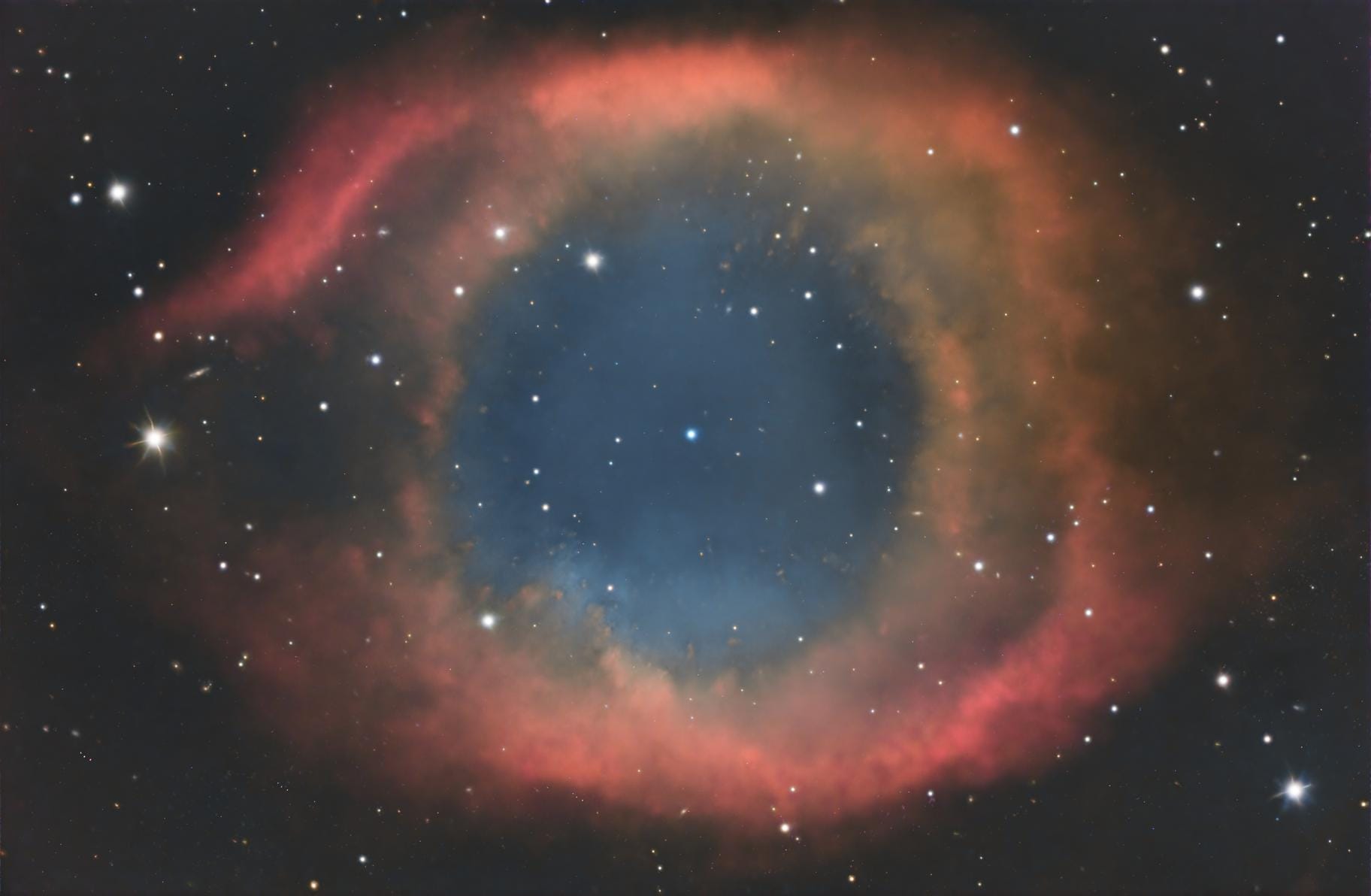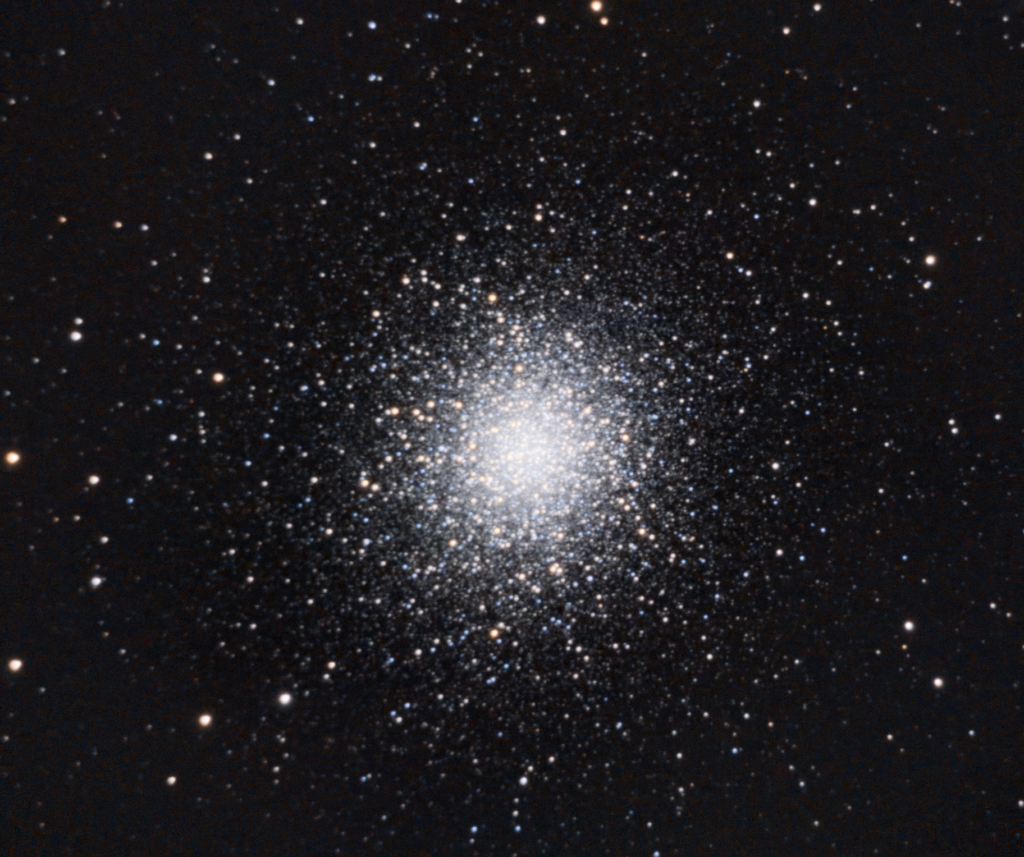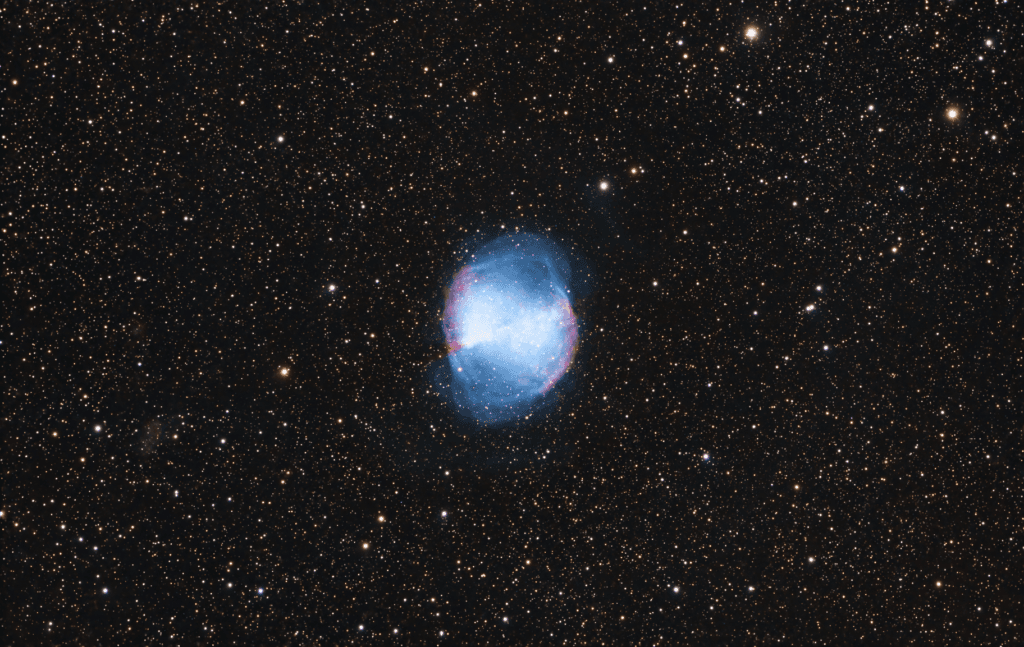
Alright, my fellow sky-gazers, let’s dive into one of the most iconic and visually stunning objects out there: the Helix Nebula!
If you’ve ever seen an image of this beauty, you know why it’s often nicknamed the “Eye of God” or even the “Eye of Sauron” – it truly looks like a giant, ethereal eye staring back at us from the depths of space. And believe me, when you lay eyes on it through a telescope or capture it with your camera, it’s nothing short of mesmerizing!
Located in the constellation Aquarius, the Helix Nebula (also known as NGC 7293) is a planetary nebula. Now, don’t let the “planetary” part fool you – it has absolutely nothing to do with planets. This is actually the beautiful, albeit somewhat dramatic, farewell of a star much like our own Sun, as it sheds its outer layers at the end of its life.
At a distance of about 650 light-years, the Helix is one of the closest and largest planetary nebulae to Earth. This proximity is a huge win for us astrophotographers, allowing us to resolve incredible details within its expanding shell of gas. This isn’t a tiny, compact fuzzball; it spans about 2.5 light-years, appearing nearly half the width of the full moon in our sky!
What makes the Helix so captivating are its intricate structures. You’ll see rings of glowing gas, vibrant with the blues of oxygen and the reds of hydrogen and nitrogen, all energized by the intensely hot, dying star at its center, which is destined to become a white dwarf. But what’s really fascinating are the thousands of tiny, comet-like knots of gas, each larger than our entire solar system, that seem to stream outwards from the central star. These “cometary knots” are still a bit of a mystery, but they add an incredible texture and depth to the nebula.
This nebula is a powerful reminder of the stellar life cycle – a glimpse into the future of our own Sun, which will eventually undergo a similar, breathtaking transformation. It’s a testament to the dynamic and ever-evolving nature of our universe.
Despite its large apparent size, the Helix Nebula can be a bit of a challenge visually due to its low surface brightness, but with the right equipment and techniques (and maybe a good OIII filter!), it truly shines. My new setup is practically itching to get a long, detailed exposure of this cosmic eye, capturing all its vibrant colors and delicate filaments. Stay tuned, because I’m dreaming of some truly divine images from this celestial wonder!


